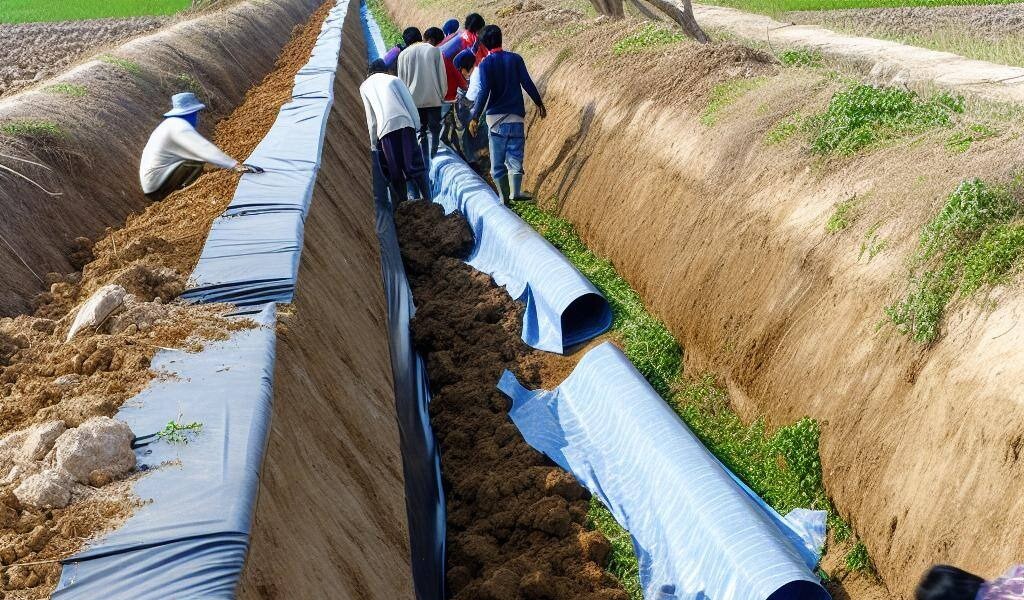What are Ditches?
Ditches. We see them along roads, around fields, and sometimes even in our backyards. These seemingly simple channels play a crucial role in drainage, erosion control, and even water transportation. But what happens when a ditch doesn't perform as intended? The answer might lie beneath the surface, in the form of a ditch liner.
The Power of Ditch Liners Explained
Ditches, those often-overlooked channels carved into the earth, play a crucial role in various applications. But sometimes, they need a helping hand – that's where ditch liners come in. Let's delve into the world of ditch liners, exploring their purpose, benefits, and what to consider when choosing one.
What Exactly are Ditch Liners?
Ditch liners are waterproof barriers specifically designed to be installed at the base and sides of ditches. These liners are typically made from durable materials like HDPE (High-Density Polyethylene) or geomembranes, depending on the specific application.
When are Ditch Liners Used?
Ditch liners are employed in a variety of scenarios:
- Drainage Ditches: In drainage applications, ditch liners prevent water from seeping into the surrounding soil. This is crucial to channel rainwater or irrigation runoff efficiently and prevent waterlogging in undesired areas.
- Erosion Control: Ditches are often used to divert water flow and prevent soil erosion. Ditch liners create a strong barrier that minimizes soil erosion by water currents.
- Leachate Collection: In landfills, ditch liners play a vital role in environmental protection. They collect leachate, a liquid waste product, and prevent it from contaminating the soil and groundwater.
- Canal Linings: Canals used for irrigation or water transportation can benefit from ditch liners. The liners minimize water seepage and ensure efficient water flow throughout the canal system.
The Perils of Skipping the Liner:
Failing to install a ditch liner can lead to several problems:
- Inefficient Drainage: Without a liner, water can seep into the surrounding soil, hindering the ditch's ability to effectively channel water flow.
- Soil Erosion: Unlined ditches are susceptible to erosion, especially during heavy rains. This can lead to damage to surrounding infrastructure and sedimentation issues in waterways.
- Environmental Contamination: In applications like landfills, leachate can seep into the soil and groundwater without a liner, posing a threat to environmental health.
The Practicality of Ditch Liners
Ditch liners offer several practical advantages:
- Enhanced Efficiency: Liners prevent water seepage, ensuring ditches function optimally for their intended purpose, whether it's drainage, erosion control, or water conveyance.
- Environmental Protection: Liners in applications like landfills prevent harmful contaminants from leaking into the soil and groundwater, safeguarding the environment.
- Long-Term Cost Savings: While the upfront cost of installing a ditch liner may seem high, it can save money in the long run by preventing costly repairs from erosion damage or environmental contamination.
- Reduced Maintenance: Lined ditches require less maintenance compared to unlined ones, as they are less prone to erosion and water seepage.
Things to Consider When Choosing a Ditch Liner
Selecting the right ditch liner depends on several factors:
- Application: The purpose of the ditch (drainage, leachate collection, etc.) will influence the liner material and thickness needed.
- Durability: Consider the expected lifespan of the project and choose a liner material with sufficient strength and UV resistance.
- Cost: While cost is a factor, prioritize quality and suitability for the application to avoid future replacements.
- Installation: The ease of installation can vary depending on the liner material. Factor in labor costs when making your decision.
Conclusion: A Sustainable Solution
Ditch liners are more than just a simple addition – they are a practical and sustainable solution for various applications. By preventing water seepage, erosion control, and environmental protection, ditch liners contribute to a more efficient and responsible infrastructure. So, the next time you encounter a ditch, remember the silent hero beneath the surface, the ditch liner, ensuring its functionality and environmental well-being.



